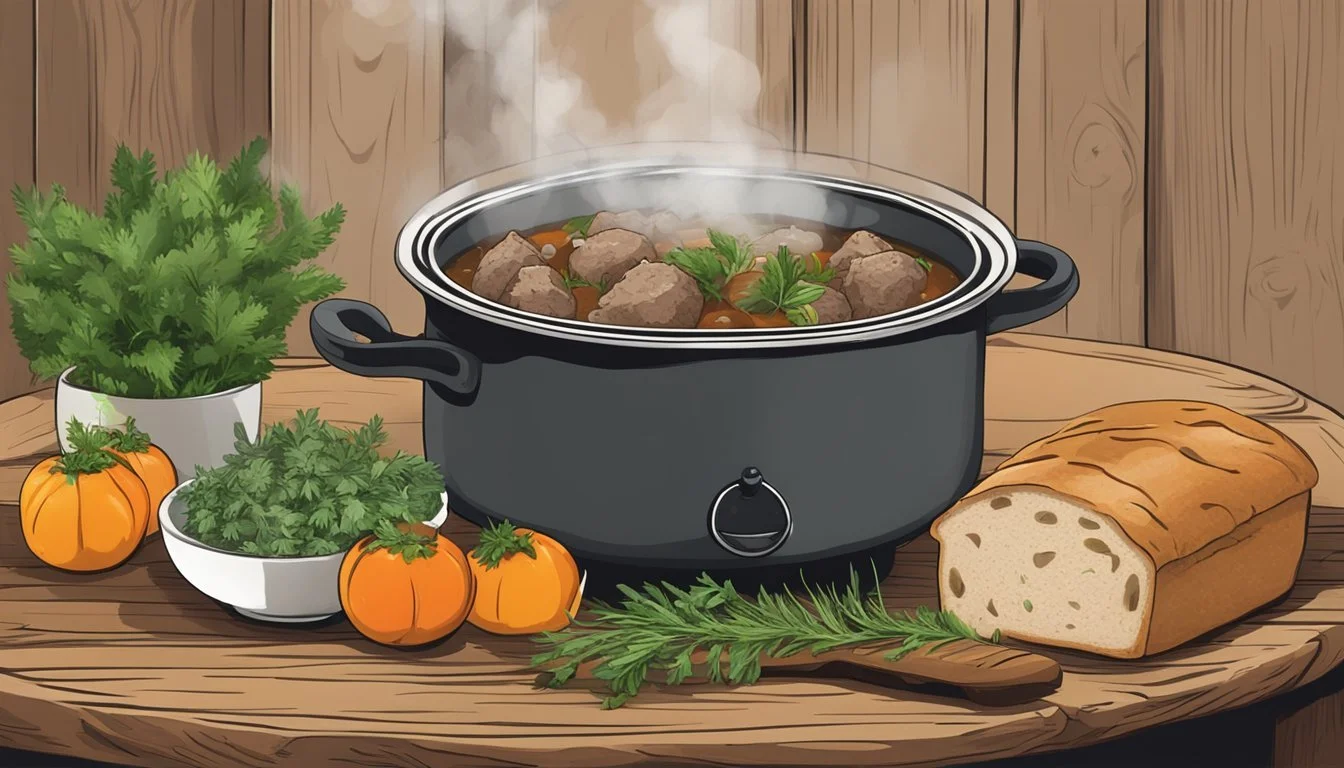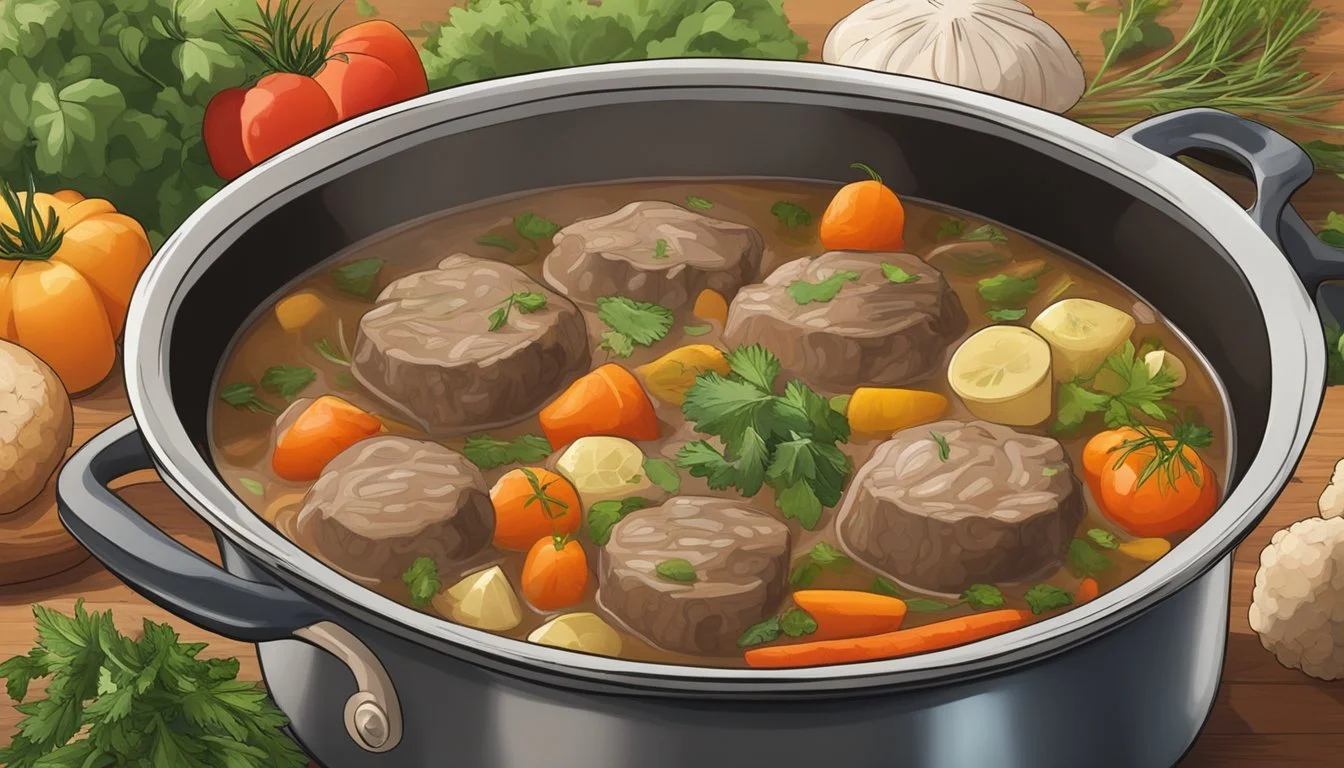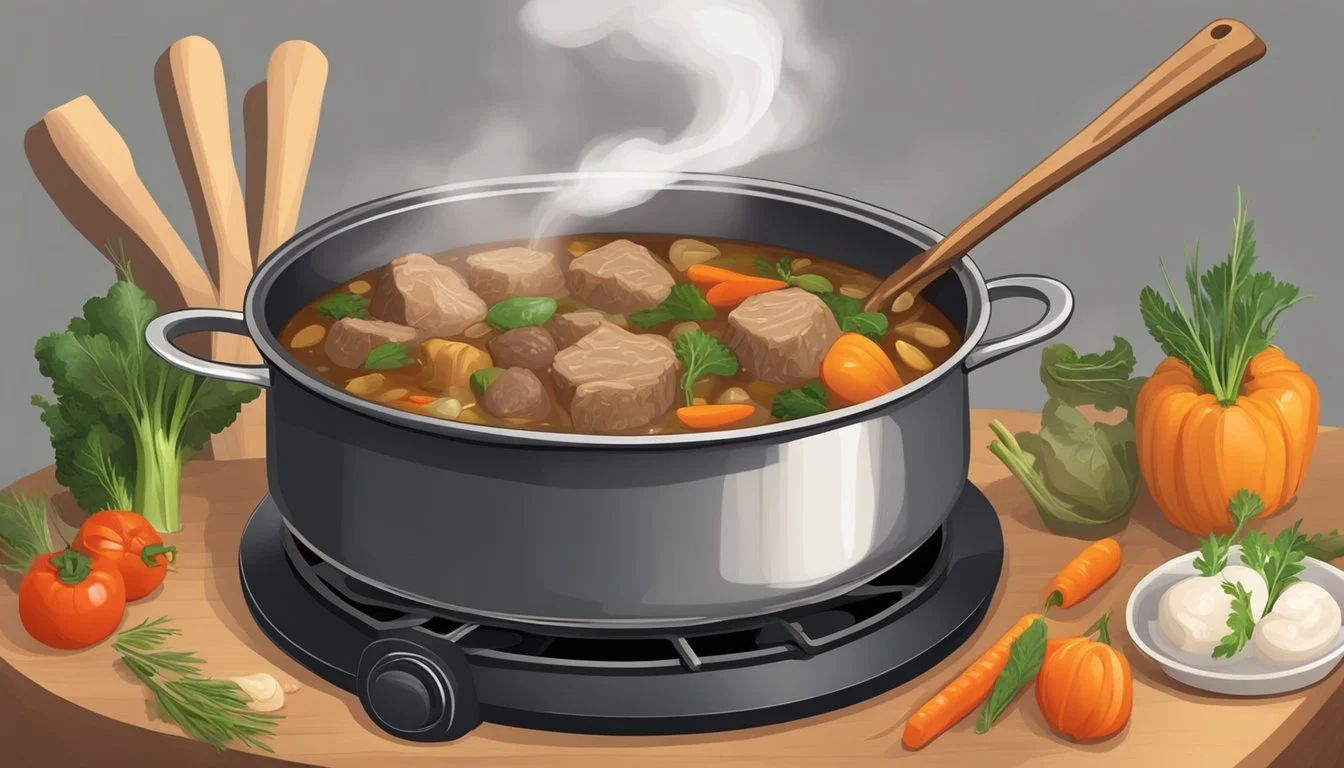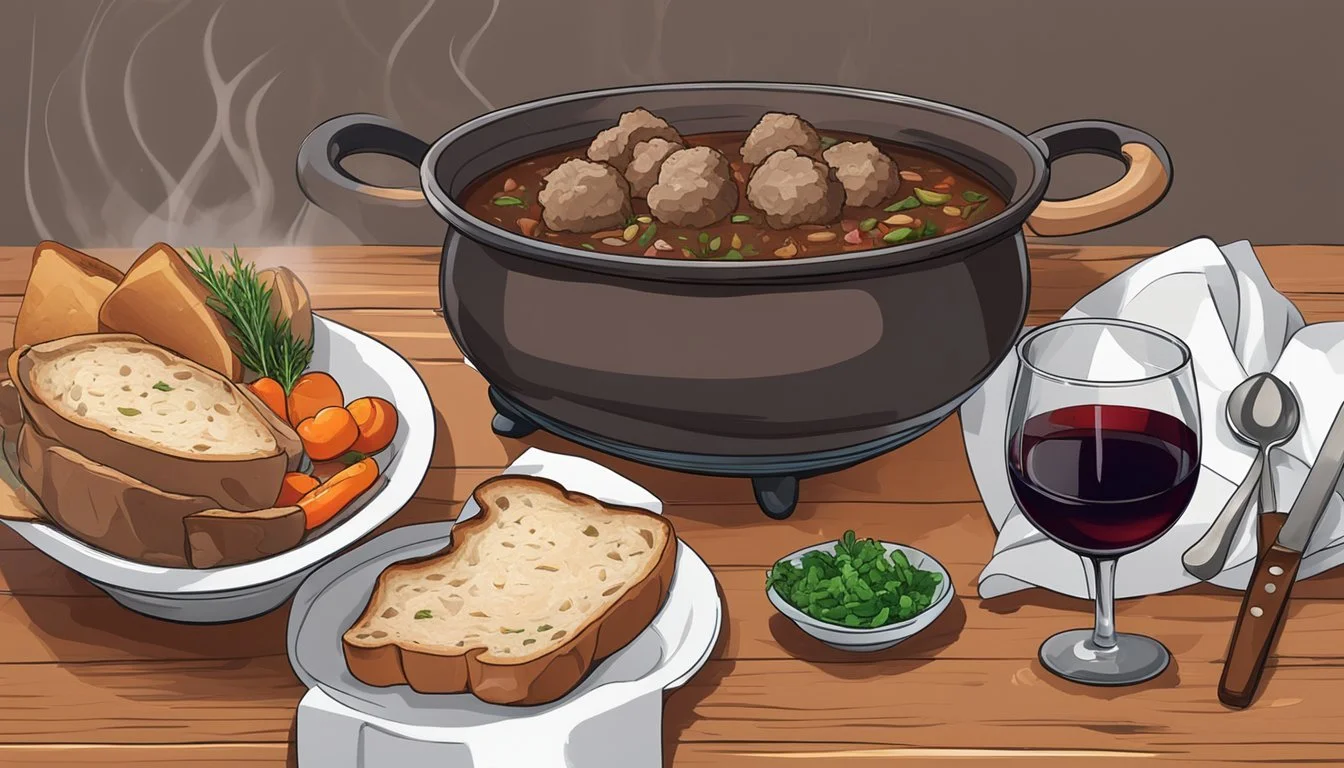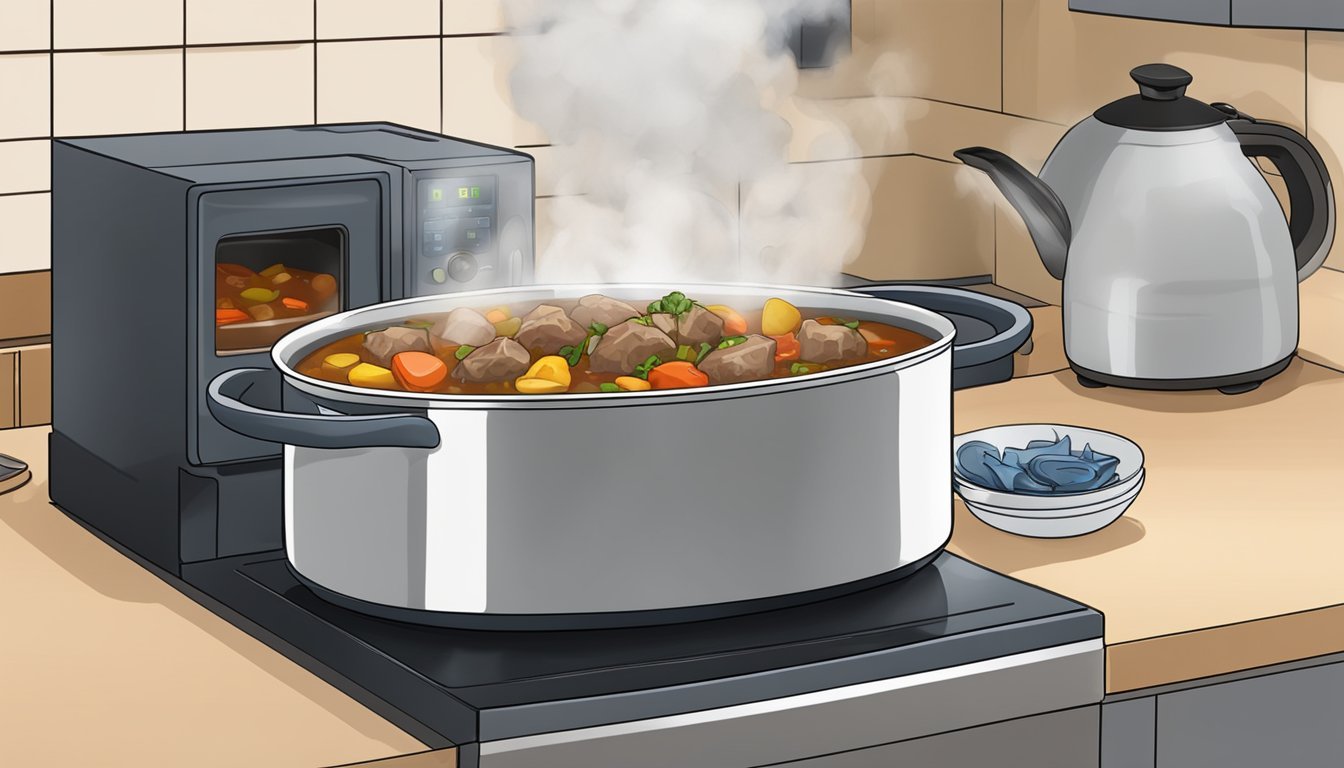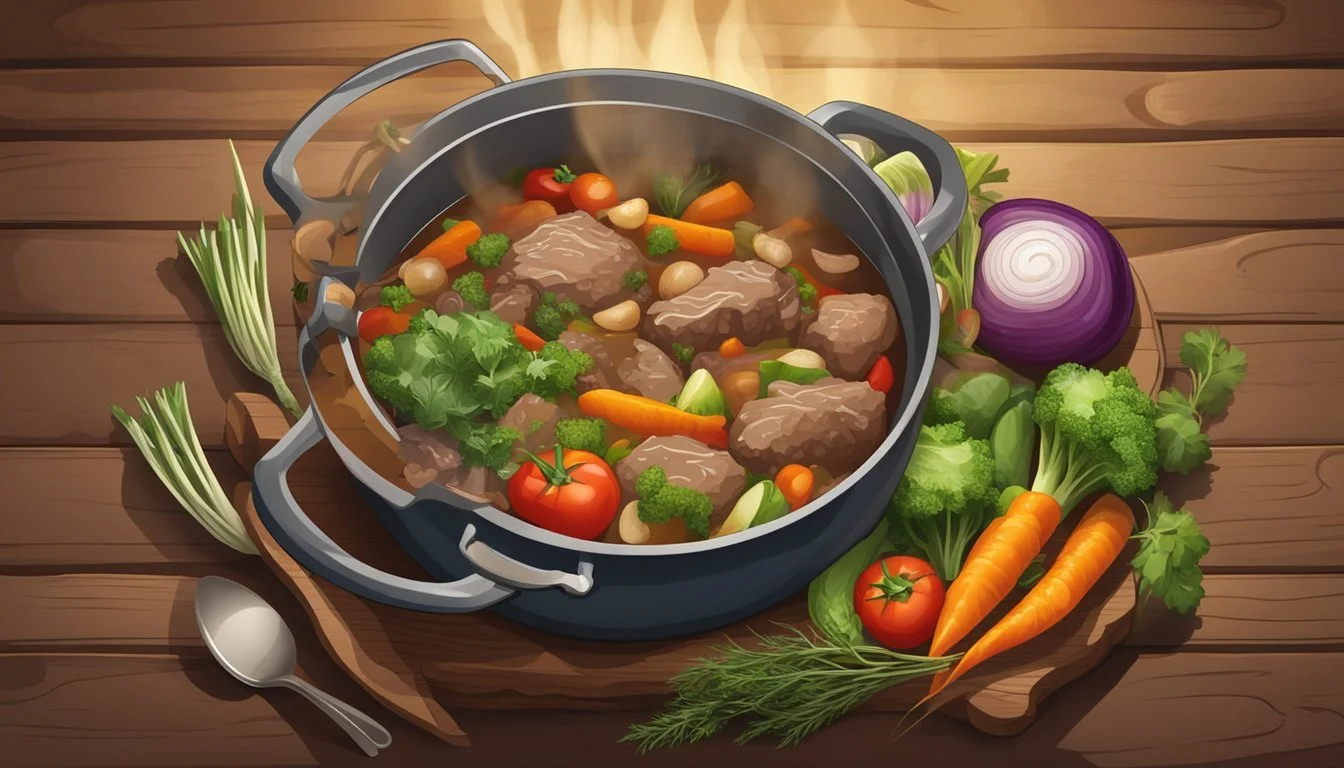How do you eat a lamb stew?
Expert Tips for Enjoying this Hearty Dish
Lamb stew represents a quintessential comfort food, known for its rich flavors and tender meat. It boasts a combination of juicy lamb cubes, hearty vegetables, and a savory broth, which all come together to create a warm, nourishing meal. Cooking methods vary by region and tradition, but the essential steps often include browning the meat to develop depth of flavor, and then cooking it slowly with vegetables and a liquid base, such as broth or stock, until everything melds into tender perfection.
One enjoys lamb stew typically in a deep dish or bowl to capture every element, often making it a stand-alone, substantive fare. The stew is ladled hot, incorporating tender chunks of lamb, softened vegetables, and a flavorful broth. This slow-cooked dish is not only filling but also delivers a satisfying complexity of taste.redient Known for being a hearty and satisfying dish, lamb stew is a beloved recipe that stands the test of time. It makes for an ideal meal when the weather is cold, providing both warmth and sustenance.
Understanding Lamb Stew
Lamb stew is a hearty and nutritious dish that offers a variety of flavors and styles. It combines tender lamb with a mix of vegetables and herbs, making it a satisfying meal option.
What Is Lamb Stew?
Lamb stew is a traditional dish that consists of bite-sized pieces of lamb meat slowly cooked with a selection of vegetables, such as carrots and potatoes, in a liquid base. This cooking process, which typically takes 1.5 to 2 hours, allows the lamb's rich flavors to infuse into the broth, creating a deep and satisfying taste profile. The slow cooking also ensures the meat becomes tender, making it comforting to eat.
Key Ingredients
Lamb: The star of the dish, typically comes from the shoulder, leg, or neck cuts.
Vegetables: Commonly includes carrots, potatoes, and onions.
Liquid: Broth or stock serves as the cooking medium, which can be beef, chicken, or specially-made lamb stock.
Herbs and Seasonings: Rosemary, thyme, salt, and pepper are staples for flavoring lamb stew.
Nutrition-wise, lamb provides a good source of protein and essential nutrients but can be higher in calories. Vegetables add dietary fiber and vitamins to the dish.
Varieties of Lamb Stew
Different regions have their own take on lamb stew:
Irish Lamb Stew: Often made with stout beer and a simple mix of root vegetables.
Other Variants: Some recipes include tomato puree for a richer base or add peas for color and sweetness.
Each variant maintains the essential characteristics of lamb stew—tender meat, a flavorful broth, and a mix of vegetables—but the specific ingredients and seasonings can vary, offering a wide range of flavors to enjoy.
Preparing the Lamb
In crafting a savory lamb stew, the preliminary focus is on selecting the right cut of meat and properly preparing it. These steps are essential for infusing the stew with rich flavors and achieving tender lamb bites.
Selecting the Meat
Selecting the appropriate cut of lamb is fundamental in stew preparation. Lamb shoulder is a top choice due to its marbling, which ensures flavor and tenderness. A leg of lamb is another fine alternative, and when available, a boneless leg of lamb is convenient as it reduces preparation time. For those preferring pre-cut options, lamb stew meat, typically from the leg or shoulder, is readily available and practical for stews (What wine goes well with stews?).
Prepping the Lamb
Once the meat is selected, preparation is straightforward. It is important to:
Season: Generously season the meat with salt to enhance its natural flavors.
Trim: Trim away excess fat to ensure the stew isn't overly greasy, while retaining enough to enrich the stew.
Cut: If not pre-cut, dice the meat into uniform chunks to ensure even cooking.
Properly prepared lamb is the cornerstone of an exquisite lamb stew.
Creating the Base
The foundation of a lamb stew is established through the browning of meats and the aromatization of vegetables, which develops deep, complex flavors. Proper thickening agents and careful simmering are crucial steps to achieve the perfect stew consistency and to fully infuse the flavors.
Building Flavors
A successful lamb stew starts by building a robust flavor base. Begin by sautéing onions and garlic in a large pot until translucent. This not only enhances their inherent flavors but also lays a groundwork for the stew. Carrots and celery are next, added for their earthiness and aromatic qualities. Once the vegetables have softened, introducing tomato paste concentrates the flavors due to its acidity and umami properties.
Meat Browning:
Brown the lamb on all sides. This caramelization process is essential as it introduces a depth of flavor that will continue to develop throughout cooking.
For best results, use a high-heat oil and don't overcrowd the pan to ensure even browning.
Aromatic Vegetables:
Onions (chopped): 1 large
Garlic (minced): 4 cloves
Carrots (peeled and chopped): 3-4 large
Celery (chopped): 2 stalks
Tomato Paste: 2 tablespoons
Thickening the Stew
For a richly textured stew, flour plays a pivotal role. Sprinkling all-purpose flour over the sautéed vegetables creates a roux when mixed with fats, which will subsequently thicken the stew. One must stir continuously with a whisk to ensure an even and lump-free consistency before slowly incorporating the liquid.
Roux Ingredients:
All-purpose Flour: 1/4 cup
Combine with vegetable and fat in the pot and cook for 2 minutes.
Simmering to Perfection
The stew’s liquid is mostly comprised of broth—beef broth for its intensity—or a combination with red wine for a more complex taste. Herbs such as bay leaves, thyme, and rosemary contribute aromatic undertones. Adding black pepper and kosher salt adjusts the seasoning. The mixture should be brought to a gentle simmer, not a boil, as the former allows flavors to meld and meats to become tender over time without toughening.
Herbs and Seasonings:
Fresh Thyme: 1 tsp or two sprigs
Fresh Rosemary: 1 tsp or one sprig
Bay Leaves: 2
Ground Black Pepper: 1/2 tsp
Kosher Salt: to taste
Simmering Steps:
Bring stew to simmer and cover.
Continue to cook on low heat, checking occasionally to avoid sticking at the bottom.
Simmer until meat is tender, typically between 1 to 2 hours.
Accompanying Ingredients
A rich lamb stew pairs excellently with a variety of vegetables and a splash of wine or beer to enhance its flavor profile. Choosing the right ingredients to complement the stew is key to balancing textures and tastes.
Root Vegetables
Root vegetables are quintessential to lamb stew, offering both depth of flavor and hearty texture. Potatoes serve as a staple starch; Yukon gold potatoes are preferred for their buttery texture and ability to hold their shape, while baby potatoes add a visual and textural appeal. Parsnips, with their sweet, earthy taste, also make a great addition. Don't forget to include turnips, which contribute a slightly peppery bite that can contrast the richness of the lamb.
Additional Vegetables and Wine
To elevate the stew, chefs may introduce peas (particularly green peas) for a pop of color and a hint of sweetness. Mushrooms, if chosen, should be added for umami richness. To deglaze the pot and add a layer of complexity, a good quality wine is often used; red works well with the robust flavors of lamb. For a traditional twist, some may replace the wine with Guinness beer, which offers a malty depth that pairs exquisitely with the meat. Regardless of the choice between wine and Guinness, it should be complemented with a flavorful stock – beef or vegetable – to form a strong foundation for the stew.
Cooking Methods
Lamb stew is a hearty dish that can be prepared using various cooking methods. Whether you choose to cook it on a stovetop, in a slow cooker, or with a pressure cooker, key factors such as the type of fat used, the cookware, and the cooking time are crucial for the flavor and tenderness of the meat.
Stovetop Cooking
A Dutch oven is ideal for stovetop cooking, as its thick walls are excellent for even heat distribution. First, the lamb should be browned, using olive oil or vegetable oil for a rich flavor, or bacon grease for added depth. Browned lamb is then simmered with broth and vegetables until tender. This typically takes about 1 to 1.5 hours on a low heat setting.
Slow Cooking
For those who prefer the convenience of a slow cooker, cooking lamb stew is relatively straightforward. Lamb, vegetables, and broth are combined in the slow cooker, and the stew is cooked on low for 6 to 8 hours or on high for 4 to 5 hours. The slow cooker's low temperature allows for a gentle simmer, which can enhance the stew's flavor and tenderness.
Using a Pressure Cooker
An Instant Pot or other pressure cookers can make a lamb stew in a fraction of the time. The high-pressure environment helps the lamb become tender more quickly while still infusing it with flavor from the broth and vegetables. A lamb stew can be pressure cooked for about 35 to 45 minutes followed by a natural release of steam. It's important to seal the cooker properly and to follow the manufacturer's safety guidelines.
Serving and Pairing
Enjoying lamb stew is not just about the preparation; it's about how one serves and pairs it to enhance the taste and texture. Properly dishing up and selecting the right sides and accompaniments can elevate the tender lamb stew experience.
Dishing Up
When serving lamb stew, it is important to ensure that the lamb is fork-tender, reflecting slow cooking that brings out its rich flavor. The stew should be ladled into shallow bowls to distribute the broth and ingredients evenly. Garnishing with chopped fresh parsley adds a touch of color and a fresh taste, while a drizzle of lemon juice or a splash of red wine vinegar can brighten the flavors.
Sides and Accompaniments
The rich flavor of lamb stew pairs well with a variety of sides. A common and traditional accompaniment is Irish soda bread, a quick bread that uses baking soda as a leavening agent, and is known for its dense texture, slightly sour taste due to buttermilk, and crusty exterior.
Here are some specific side dishes that complement lamb stew:
Grains: A light and healthy option like quinoa salad, which is high in protein and fiber, can balance the heartiness of the stew.
Vegetables: Mashed cauliflower with garlic, olive oil, and parmesan cheese offers a creamy texture and savory flavor that contrasts well with the stew.
Salads: A simple fruit salad with cottage cheese (how long does cottage cheese last?) brings a refreshing and light side to the table, cutting through the richness of the lamb.
By carefully considering each element on the plate, one can create a harmonious and satisfying meal that highlights the succulent taste and tenderness of lamb stew.
Storing and Reheating
Proper storage and reheating techniques are crucial for maintaining the flavor and nutrition of lamb stew leftovers. Adherence to these guidelines ensures the dish remains enjoyable and safe for consumption after initial preparation.
Storage Tips
Lamb stew should be stored in heavy plastic, airtight containers or glass dishes suitable for freezing. It is important to leave a small gap—about ¼- to ½-inch—at the top of the container to allow for expansion as the stew freezes. Lamb stew may be safely stored in the freezer for up to three months.
Refrigerator: Keep stew in the fridge, consumed within 3-4 days for optimum freshness.
Freezer:
Unthickened: Best if the stew is frozen before adding any flour or cornstarch thickening agents.
Thawing: Defrost in the refrigerator overnight before reheating.
Reheating Lamb Stew
To reheat the lamb stew, one must balance the restoration of warmth and moisture without overcooking the tender lamb pieces.
Microwave:
Add a tablespoon or two of water or stock to reintroduce moisture.
Cover the dish with a microwave-safe lid or plastic wrap punctured with holes.
Heat in one-minute bursts, stirring after each, until thoroughly hot.
Oven:
Preheat to 350°F (180°C).
Place the stew into an ovenproof dish and cover loosely with foil.
Warm the stew slowly, checking periodically for an even distribution of heat.
Stovetop:
Gently reheat the stew in a pot on a low simmer, stirring occasionally.
Include a splash of stock if needed to maintain the consistency and prevent drying out.
In all methods, the key is ensuring the stew reaches an internal temperature of 165°F (74°C). This temperature eliminates potential bacteria growth and preserves the nutrition and taste of the stew.
Nutrition and Diet Considerations
When enjoying a lamb stew, one should consider its nutritional profile, including the caloric content and the potential for low-carb and gluten-free options. This consideration is key for those monitoring their dietary intake for health or weight management.
Caloric Content
Lamb stew can be relatively high in calories due to the presence of lamb, which is a rich source of protein and fat. A typical serving size, such as a bowl of approximately 2 cups, can deliver around 521 calories. This caloric content primarily comes from:
Total Fat: 35g
Saturated Fat: 11g
Protein: Approximately equal proportion as fats in typical recipes
Given the nutritious but calorie-dense nature of lamb, portion control may be important for those who are managing their calorie intake.
Low-Carb and Gluten-Free Options
A traditional lamb stew can be adapted to suit a low-carb or a gluten-free diet. By focusing on the key components of lamb, which is naturally gluten-free, and an assortment of vegetables, one can minimize carbohydrates and eliminate gluten-containing ingredients. Here are specific adjustments:
Carbs: Reduce high-carbohydrate vegetables or thickening agents like flour, opting for leafy greens and non-starchy vegetables instead to lower the carbohydrate count.
Gluten-Free: Ensure all broth and seasoning used are without gluten-containing additives. Substitute any wheat-based components with gluten-free alternatives, if necessary.
By making these adjustments, individuals on low-carb or gluten-free diets can still enjoy a nutritious and hearty lamb stew.
Recipe Ideas
When it comes to lamb stew, there are classic recipes that have stood the test of time as well as modern, innovative twists that add new flavors and textures to this hearty dish. The versatility of lamb stew allows for various cuts of meat and an array of spices, making it an ideal one-pot meal for any occasion.
Classic Recipes
Irish Stew: Often considered the quintessential lamb stew, Irish Stew traditionally includes chunks of lamb shoulder, onions, carrots, and potatoes. Slow-cooked until the meat is tender, the stew is seasoned simply with salt, pepper, and sometimes fresh thyme or rosemary for an aromatic touch.
Beef and Lamb Stew: Combining beef and lamb in one stew offers a depth of flavor. One can use both beef and lamb chunks, simmering with vegetables like parsnips and turnips, in a rich broth infused with bay leaves and a hint of Worcestershire sauce for added complexity.
Innovative Twists on Lamb Stew
Spiced Lamb Stew: For a modern take, chefs might incorporate spices such as cumin, coriander, cinnamon, and a pinch of cayenne pepper. This unlocks a vibrant flavor profile that contrasts with the hearty nature of traditional lamb stew recipes.
Mediterranean-inspired Lamb Stew: By adding ingredients like olives, lemon zest, and feta cheese, one transforms the taste into something reminiscent of Mediterranean cuisine, offering a refreshing twist on a classic lamb stew.
In both classic and innovative recipes, the choice of lamb cut is key, with leg and shoulder being popular for their rich texture and flavor when slow-cooked.
Conclusion
When enjoying a lamb stew, one appreciates the harmonious blend of tender lamb pieces and robust vegetables that have been simmered to perfection. Each spoonful should be savored, with the rich, comforting broth marrying the flavors of the meat, root vegetables, and herbs. To enhance the experience, one might consider pairing their stew with a slice of crusty bread or a portion of fluffy rice; these sides help to soak up the delicious broth.
It is customary for diners to serve lamb stew hot, as the warmth accentuates the stew’s aromas and flavors. For those who find joy in culminating their meal with a touch of freshness, a sprinkle of chopped parsley or a dash of lemon juice can offer a pleasing contrast to the stew's savory notes.
Etiquette suggests serving the stew in a pre-warmed bowl or dish to maintain its temperature, ensuring a delightful dining experience. Lamb stew stands not only as a meal but also as a showcase of one's cooking prowess, where the careful preparation and slow cooking reflect dedication and culinary skill.


